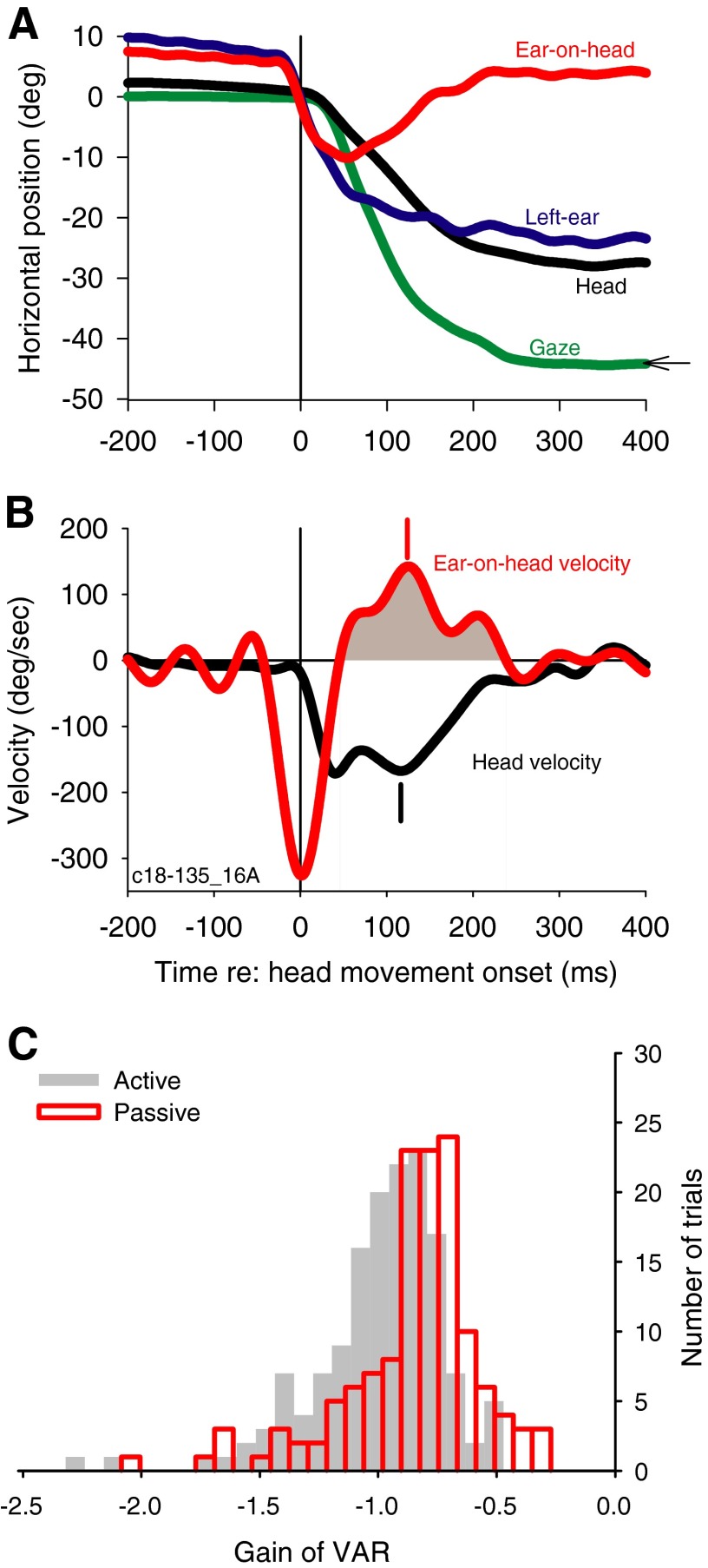FIG. 2.
Pinna movements compensate for head movements via the vestibulo-auricular reflex (VAR). A: head (black), left ear (blue), gaze (green), and ear-on-head (red) traces for a different trial from the same cat as shown in Fig. 1 to an acoustic target at −45°. B: instantaneous velocities of the ear-on-head (red) and the head (black) for the trial shown in A. All times are plotted relative to the onset of head movement. C: histograms of the active (gray bars) and passive VAR gains (red). Active VAR was computed by the ratio of peak ear-on-head and head velocities while passive VAR gain was computed by the ratio of mean of ear-on-head and mean head velocity during the time of the VAR. Gain of −1.0 indicates that the pinna counter-rotates with an equal but opposite velocity as the head. Mean active VAR is −1.03 ± 0.28 (n = 149) and mean passive VAR is −0.89 ± 0.29 (n = 135).

